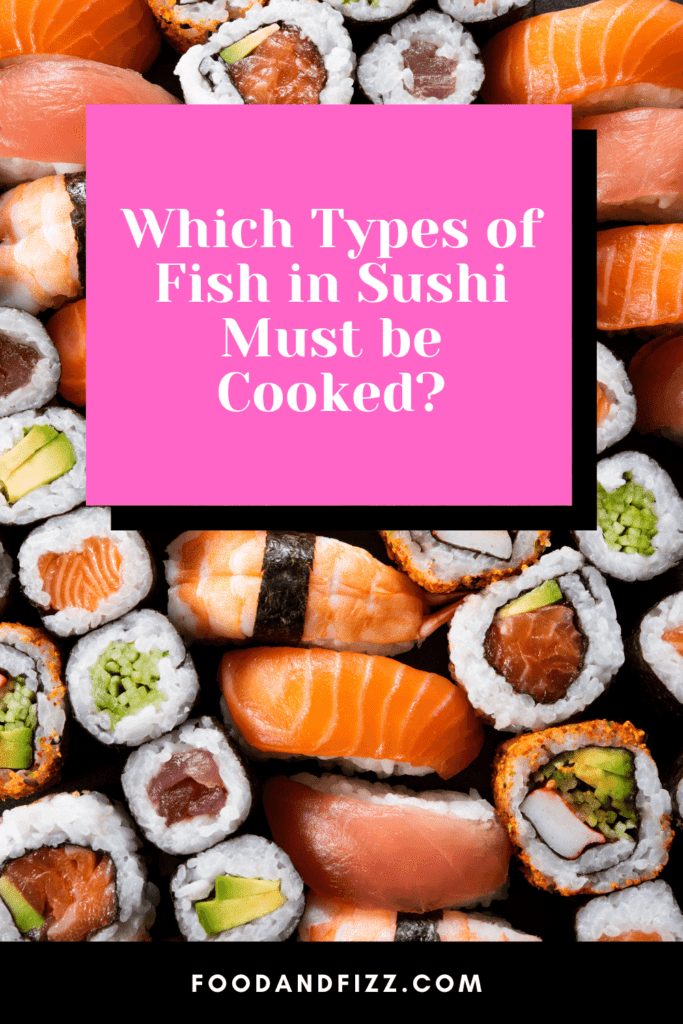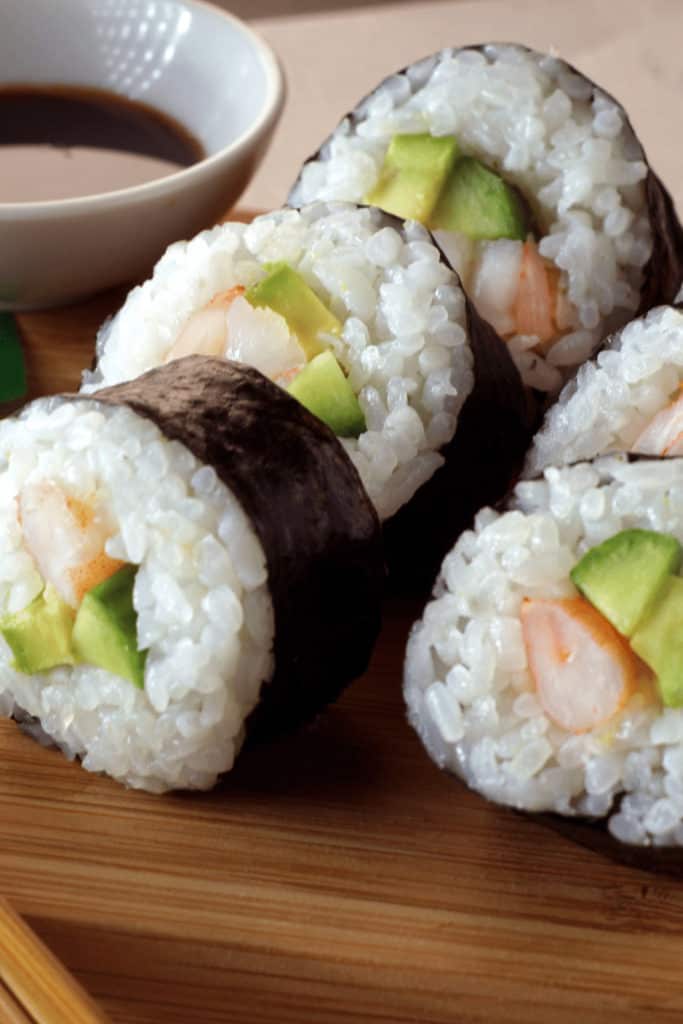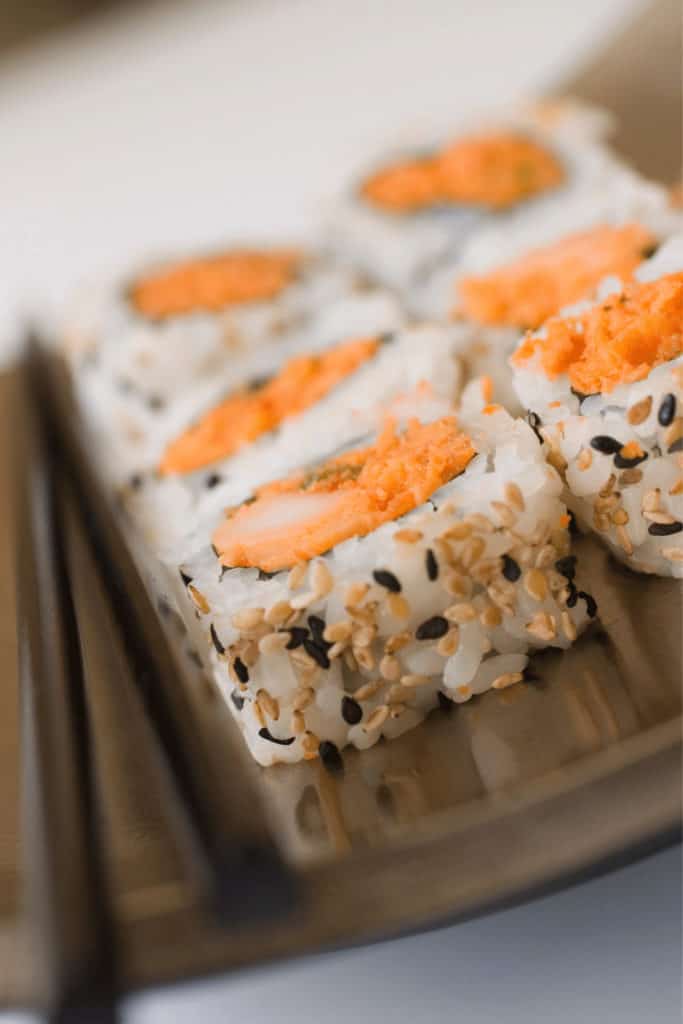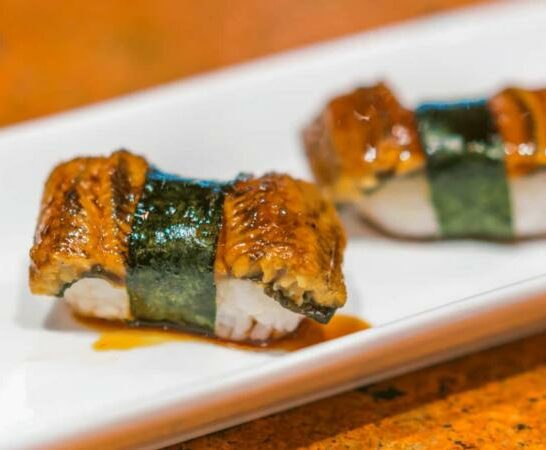The more adventurous among us can’t wait to get into a sushi bar, jump in with both feet and happily chomp on whatever the chef plops down in front of them.
Others, though, bewildered by a baffling array of names like Fugu, Uni, Nori, and Hamachi, are more cautious, carefully asking, ‘Is this raw?’ to everyone else’s exasperation.
Which types of fish in sushi must be cooked? I will answer this question in this article.
If you are the latter type, instead of making a nuisance of yourself the next time you visit a sushi bar, simply bone up (no pun intended) on this guide and learn the kinds of fish/seafood that will always be presented cooked in a sushi bar.
That way, you can bravely order what you want like a sushi expert, and no one will be any the wiser that you’re actually a yellow-bellied sneaky little so-and-so.
The world will be your oyster! (No pun intended. 😉)
Which types of fish in sushi must be cooked?
The only true fish served cooked in sushi is eel. However, many kinds of seafood served in sushi are always cooked: clam, cockle, crab, octopus, and shrimp.

Eel Sushi
Unagi (ウナギ) means freshwater eel in Japanese according to Nihongo Master.
Sushi containing eel is called unakyu.
Eel always needs to be cooked as eel blood is toxic according to Shogun Orlando.
This is why you will never find raw eel to eat and why eel sushi is always with cooked eel.
Getting the terminology right
‘Sushi‘ means something made with vinegar-seasoned rice. The ‘something’ can be raw or cooked.
Raw ingredients are many kinds of fish and some vegetables.
Cooked ingredients are seafood, chicken, and certain vegetables.
In the West, we throw the word ‘sushi’ around with the happy abandon of the ignorant.
Oddly, the very thing that we most closely associate with ‘sushi’ is the one thing in a sushi bar that isn’t really it!
Now that I am setting you on your path to becoming a sushi expert, your ‘training’ begins with learning what’s what in a sushi bar.
Maki
Maki is a roll made of fish or seafood, rice, and vegetables, all rolled with a wrap of seaweed.
The fish or seafood in maki can be cooked or uncooked, so there’s no way of telling unless you know what kind of fish/seafood is on the wrap.
When folks say ‘sushi,’ nine times out of ten, they mean maki.
You can tell it’s maki because the rice will be on the outside.
There are variants of maki like ‘hosomaki’ (which is like a poor man’s maki as it has only one ingredient other than rice and the seaweed wrapper), and ‘temaki,’ which is formed by hand and uses less seaweed.
You can tell it’s temaki because it will be coned-shaped. (The rice will still be on the outside, just like ordinary maki.)

Nigiri
Nigiri is made of thinly sliced raw fish laid on top of a mound of rice.
Unlike maki, the fish/seafood in nigiri is always served raw, so if you’d rather not tangle with raw fish or seafood, give nigiri a wide berth.
One little snippet about nigiri is that it means ‘two fingers.’ No, the chef isn’t being rude (he, too, apparently doesn’t intend a pun, chortle).
The ‘two fingers’ refers to the size of the portion of rice.)
Classically, nigiri is made with a small amount of wasabi artfully placed between the rice and the fish, so that a bite into nigiri is a pleasant surprise or a horrible shock, depending on how you feel about wasabi.
If you absolutely detest wasabi in upscale–or just affable–sushi restaurants, the chef can customize your nigiri by substituting the wasabi with ‘nori,’ which is toasted seaweed.
If you ask for nori, the restaurateur will be very pleased, because real wasabi is horridly expensive the way toasted seaweed so isn’t.

Sashimi
Sushi purists (which now includes you, of course) do not count sashimi as being authentic sushi because sashimi is made of fish, seafood, and even other meat served without rice.
The absence of rice deletes sashimi from the list of sushi for traditionalists because, as mentioned earlier, sushi is a roll of vinegar-seasoned rice with various ingredients.
One stand-out feature of sashimi is that all sashimi is raw; there is no such thing as cooked sashimi regardless of what some dilettante, westernized, would-be sushi ‘experts’ claim.
Sashimi usually contains the most expensive items in a sushi restaurant.
That is because it is pure, high-grade protein, and there is little chefs can do stuff it with fillers and other foods which are the culinary equivalent of ‘fluff.’
It takes massive amounts of experience to present really excellent sashimi when even the way the fish or meat is sliced or garnished brings out different flavors.
If you order sashimi, don’t just munch on it like a hamburger.
Each morsel of sashimi has been carefully prepared to delight the tongue, and you should enjoy every bit of it attentively, finding out which combinations tickle your fancy best.

What is sushi?
So, sushi is a roll of rice that forms the basis of a meal. Sushi comes as maki and nigiri.
Rice in maki is on the outside, rice in nigiri is on the bottom and serves as a bed.
Sashimi is not sushi! It isn’t sushi because it isn’t served with rice.
However, sashimi is a staple–and expensive–part of every sushi restaurant.
Cooked sushi
Eel
Eel is the only true fish served cooked in sushi. The reason is that raw eel blood can be poisonous.
Eel is always steamed or grilled. Other forms of cooking eel result in a chewy, surprisingly unpleasant meal.
Clam
Clam is served cooked in sushi because when it is raw, it is remarkably underwhelming, with flavors so subtle that the diner might as well not bother.
However, when sauteed in butter, clams come into their own and make a welcome addition to many-a sushi gourmet.
Note that in Japan, the sweeter, black northern clam is sometimes served raw.
Cockle
Cockle can be served raw, but it rarely is because it does not offer much of a tasty experience.
Instead, sushi chefs flash boil cockles to release their wonderful flavor.
Crab
Obviously, crab, no one will ever present a raw crab as its shell is sure to make it inedible.
Not only that, but raw crab meat is paradoxically incredibly soft and disintegrates as a would-be diner tries to separate the flesh from the shell.

Octopus
Octopus is served in sashimi thinly sliced and lightly poached.
Without this treatment, octopus is chewy and not particularly delightful to the palate.
Shrimp
Raw shrimp is sometimes made available to the ultra adventurous in the form of sashimi, but most people strongly prefer lightly poached shrimp, which tastes a heck of a lot better and, given the highly perishable nature of shrimp, safer too.
Frequently Asked Questions About Which types of fish in sushi must be cooked
I want to avoid raw fish or seafood sushi. What should I order?
Start by ordering maki made with one of the cooked ingredients mentioned earlier in this article. Absolutely, totally, completely, and utterly avoid nigiri and sashimi as these are always made with raw ingredients.
Does sushi come with anything other than fish and seafood?
Certain sushi restaurants and bars serve chopped chicken or pork and even diced vegetables in rolls or rice made to look like maki, or on a bed of rice made to look like nigiri. Sashimi may contain meat. However, the best way to think of it is to ask whether you would find any of these meals in a good sushi restaurant in Japan, and the answer is no!
Afterword: Which types of fish in sushi must be cooked?
Eel is the only true fish that is served cooked in sushi.
Other seafood is always served cooked, more often than not, because served raw, these items either don’t taste of anything at all or else taste absolutely atrocious.

